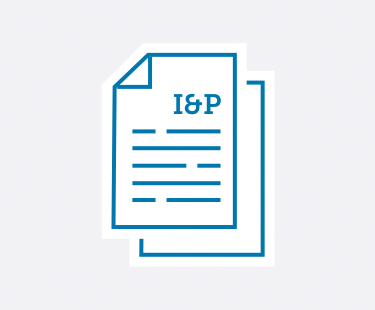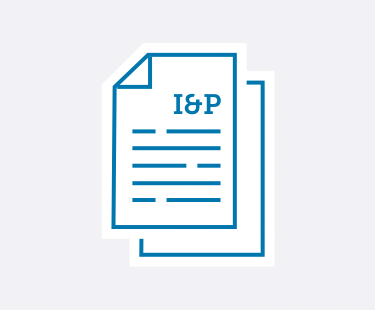

Learn practical strategies to handle emerging trends and leadership challenges in private schools.
No matter if you’re a School Head, Admission Director, Development Director, Board member, or any other private school administrator—Ideas & Perspectives®, ISM’s premier private school publication, has strategic solutions for the pervasive problems you face.
- Tuition not keeping pace with your expenses? In I&P, explore how to use strategic financial planning to create your budget and appropriately adjust your tuition.
- Enrollment dropping off? Discover how to implement the right admission and enrollment management strategies that engage your community—and fill your classrooms.
- Trouble retaining teachers? Learn how you can best support your teachers using ISM’s Comprehensive Faculty Development framework. Your faculty members will become more enthusiastic about their roles—which ultimately improves student outcomes.
- Fundraising campaigns not as successful as you’d hoped? Implement ISM’s practical advice and guidance to build a thriving annual fund, construct an effective capital campaign, and secure major donors—no matter your community size or location.
- Not sure how to provide professional development—for you and your staff? Learn ways to develop and fund a successful professional development strategy. You can improve teacher-centered satisfaction and growth, which in turn strengthens student-centered learning.
- Problematic schedule? You can master the challenges of scheduling with the help of ISM’s practical advice, based on our experience with hundreds of schools and our time-tested theories.
- And so much more.
I&P has shared targeted research, up-to-date insight, and sound theory with school leaders since 1975. More than 8,500 private school decision-makers find the answers to their schools’ administrative and governance matters in our advisory letter. We give you the strategic answers you need.
As an ISM Silver or Gold member, you not only receive issues online and in print 10 times a year, but you have access to 900+ articles in our web archive. Need help? It’s at your fingertips! Learn more and sign up for ISM's membership here.
Search
See the articles from our latest issue of Ideas & Perspectives.
Essential Expectations of Senior Administrators
Volume 42 No. 9 // July 20, 2017
In a previous article, we listed observable behaviors that collectively form an action premise from which each Headship develops. In this article, we consider the senior administrator position—those who report directly to the Head and collectively form the Leadership Team. The essential expectations list is one of two criteria for administrator evaluation. The other criteria are objectives created from the annual administrative agenda. This agenda’s objectives change each year as the strategic needs of the school continue to evolve, as articulated through the Board’s strategic plan/strategic financial plan. The essential expectations, on the other hand, are a constant reflecting the observable behaviors that the School Head expects each member the Leadership Team to exhibit and the Head evaluates.
1. Already a member? Click here to login.
2. Not a member? Click here to become a member.
3. Not sure? We'll help you figure it out.
The Toxic Teacher: An Unfortunate Journey
Volume 42 No. 8 // June 26, 2017
In a previous article, we identified the way in which administrators could use predictability and supportiveness to impact their school’s faculty culture, and provide a framework within which to identify a toxic teacher and move the individual away from the center of that culture. In this article, we imagine what that teacher’s journey was like in becoming toxic, and suggest ways in which teachers can find fulfillment over a career of teaching.
1. Already a member? Click here to login.
2. Not a member? Click here to become a member.
3. Not sure? We'll help you figure it out.
Revisit Your School’s Campus Master Development Plan
Volume 42 No. 8 // June 26, 2017
In a previous article, we provided four factors to keep in mind when considering facilities planning. Curriculum does not drive facility needs. Environmental regulatory concerns and communications infrastructure require a flexible approach. Design matters to students, and their voice is important. Facilities must move from command and control (adult-centered) to multifunctional collaborative learning (student-centered). We now expand these factors to inform key campus master development planning.
1. Already a member? Click here to login.
2. Not a member? Click here to become a member.
3. Not sure? We'll help you figure it out.
The Head Support and Evaluation Committee: An Update
Volume 42 No. 8 // June 26, 2017
ISM has written much over the years about Head evaluation. We now update and further explain the basis for the employer/employee relationship between the Board of Trustees and the School Head. An understanding of the critical distinction between the strategic plane and the operations plane resides at the heart of private-independent school governance. The Board lives on the strategic plane with its actions and focus encapsulated in the strategic plan/strategic financial plan. This vision of the school’s future, with its companion fiscally conservative assumptions, provides the guide rails to Board action through the annual Board agenda and to operations action through the annual administrative agenda. Thus, the strategic plane not only determines the school’s visionary future but, by direct implication, also determines the most important actions to take on the operations plane by the School Head and administration. The direction is inviolate—the Board decides the school’s direction and only the Board can change that direction. The School Head controls how to make that direction operational and has almost complete discretion over that, limited only by the strategic financial plan’s fiscal assumptions.
1. Already a member? Click here to login.
2. Not a member? Click here to become a member.
3. Not sure? We'll help you figure it out.
The Admission Director as Major Gifts Officer
Volume 42 No. 8 // June 26, 2017
In ISM’s Advancement Model, we advocate strategically integrating admission, marketing communications, and development at the service of your school’s mission. This model facilitates a united function that inspires and manages the flow of resources into the school—recruiting and re-recruiting students and their families and inviting philanthropic investment.
1. Already a member? Click here to login.
2. Not a member? Click here to become a member.
3. Not sure? We'll help you figure it out.
The Toxic Teacher: Identification
Volume 42 No. 7 // June 8, 2017
For you as a School Head, Human Resources Director, or an academic administrator, toxic teachers can be a puzzling phenomenon. Teachers, at the beginning of their careers, are typically: full of hope; excited about changing the world one child at a time; interested in—or even obsessive about—their subject material; and prone to moving every conversation (even those outside the school) to “what happened at school today.”
1. Already a member? Click here to login.
2. Not a member? Click here to become a member.
3. Not sure? We'll help you figure it out.
The ISM Stability Markers: Snapshot Scoring
Volume 42 No. 7 // June 8, 2017
The ISM Stability Markers® comprise outcomes of ISM Consultants’ internal studies that periodically address the question: What variables are associated most strongly, according to ISM data, with a private-independent school’s ability to sustain excellence? This article—a snapshot of the larger array—provides readers with a self-scored estimate of the more comprehensive, 18-item set of ISM Stability Markers. This is designed to be used by the School Head, Business Manager, or other senior administrators in developing a preliminary, yet thoroughly data-driven, portrait of your school’s organizational and financial positioning for the long run.
1. Already a member? Click here to login.
2. Not a member? Click here to become a member.
3. Not sure? We'll help you figure it out.
The Donor Cycle
Volume 42 No. 6 // May 8, 2017
The competition for philanthropic gifts, and a donor’s reason for giving, require a more complex and multifaceted balance. Advancement professionals need deeper insights into what motivates donors and prospects to give. Develop effective strategies to engage and bring them closer to your institution. Donors are vital for securing your school’s stability and success, and your relationships with them must be conducted with care and understanding. The Donor Cycle is a strategic approach to moving the donor into a closer relationship to the school. It is a sequence of processes and practices involved in establishing and renewing the connection of donors and their values with the school and its mission.
1. Already a member? Click here to login.
2. Not a member? Click here to become a member.
3. Not sure? We'll help you figure it out.
Are Referral Incentives the Right Approach to Recruit Families?
Volume 42 No. 6 // May 8, 2017
Private-independent school Admission Directors are finding recruiting prospective new families more and more challenging in an era in which new sources of educational competition (e.g., charter schools, magnet schools, and micro-schools) pour into the marketplace. To enhance referral enthusiasm among current families and, on occasion, outside third parties, some Admission Directors feel drawn to explore referral incentive programs. Others see the practice to be one that borders on being unethical.
1. Already a member? Click here to login.
2. Not a member? Click here to become a member.
3. Not sure? We'll help you figure it out.
Tuition Change and Enrollment Demand: A Replication Study
Volume 42 No. 6 // May 8, 2017
Independent School Management (ISM), the National Business Officers Association (NBOA), and Measuring Success have collaborated to update a study and methodology originated in 2006 by Measuring Success and repeated in 2011 by Measuring Success with ISM. These original studies suggested no statistical relationship between tuition increase and enrollment outcome.
1. Already a member? Click here to login.
2. Not a member? Click here to become a member.
3. Not sure? We'll help you figure it out.


